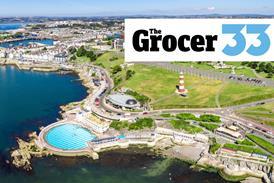Growth in demand forced a major rethink in supply chain logistics
Two into one doesn't always go, but for Nisa-Today's it's proving good maths. Last year Britain's biggest retail buying consortium brought its separately run frozen and chilled food operations under one wing at a 160,000 sq ft dedicated warehouse in Stoke run by Exel Logistics.
Nisa's logistics director Stephen Hunter explains why.
"We supply a membership of around 2,000 independent retailers and wholesalers. Since 1990 we'd been delivering frozen and chilled food to them from two separately run ventures. But with the combined volume reaching 18m cases in 1999 and growing 10% annually, we needed to increase warehouse capacity and change our operating methods to meet demand.
"We also wanted to give our members greater flexibility to help maintain their competitiveness against larger retailers."
Exel, which has been Nisa's frozen and chilled logistics operator since 1990, was given the task of creating the new facility.
A conversion of an existing warehouse, it has dual temperature operation and has the capacity to handle volumes of up to 26m cases a year sufficient to meet Nisa's growth expectations for the foreseeable future.
The vehicle fleet has been changed to dual temperature urban artics which offer 25% more capacity than rigid trucks, but with the same turning circle. At the same time, fleet numbers have been reduced by 25%, made possible by the increased vehicle capacity, the creation of combined deliveries, and extending deliveries from five to six days a week.
Hunter says the new operation has brought considerable advantages to Nisa's members.
"The single operation allows them to place a single order and receive a single combined delivery. It's also enabled them to order smaller quantities of frozen and chilled, for example 25 cases of each, instead of 50 at a time. As a lot of our stores are small with limited requirements, this development is particularly important to them."
Members have also benefited from more frequent deliveries.
"Deliveries have increased," says Hunter. "Some members have gone from two to three a week, while others are now taking six day deliveries. This has meant chilled produce is now fresher on the shelves."
Hunter says cost savings have been achieved by the new operation, but this was not the primary objective.
"Any savings have been mitigated by the investment in new equipment and the increase in service levels. So it is a self-funding improvement."
Nisa is now planning further improvements to its delivery service for both its frozen/chilled and ambient goods.
In March it is to embark on a three month trial of the Isotrack incab communications system which pinpoints the exact location of any truck, what it's doing and provides consignment tracking and proof of delivery.
Hunter expects it will be a valuable tool for multi-drop deliveries where delays upset schedules.
"The system's real time communications will enable us to update retailers on the exact time of arrival."
The development of the Stoke facility brings Nisa's frozen and chilled side in line with its ambient operation which has been run from a national consolidation centre at Scunthorpe by Bibby Distribution Services since 1990.
Last spring a second site at Scunthorpe was opened to centralise distribution of wines and spirits. Also run by Bibby, it has brought delivery economies to members as drinks can now be supplied along with orders for groceries.
{{FOCUS SPECIALS }}
Close menu
- Home
- Retail & Wholesale
-
Products & Suppliers
- Back to parent navigation item
- Products & Suppliers
-
Product Categories:
- Back to parent navigation item
- Product Categories:
- Alcoholic drinks
- Bakery
- Cereals & breakfast
- Cheese
- Chicken & poultry
- Chocolate
- Confectionery
- Crisps, nuts & snacks
- Dairy
- Fish
- Fresh produce
- Frozen
- Household
- Meat
- Own Label
- Sauces & condiments
- Seasonal
- Soft drinks
- Vaping
- Vegan & plant-based
- World foods
- Suppliers
- People
- Reports & Data
-
Topics A-Z
- Back to parent navigation item
- Topics A-Z
-
Popular topics:
- Back to parent navigation item
- Popular topics:
- Cost of living crisis
- Crime
- Deposit Return Schemes
- Finance
- Government & Regulation
- Health
- Inflation
- Loyalty
- Marketing
- Mergers & Acquisitions
- New Product Development
- Sourcing
- Supply chain
- Sustainability & environment
- Technology
- Ultra Processed Foods
- Vaping
- A-Z all topics
- Content by type:
- Events
- Ask iA (beta)
- Subscribe now
Sign in to comment on this article
Not logged in before? Register for FREE guest access today.
You will be able to:
- Read more stories
- Receive daily newsletters
- Comment on stories
Advert















No comments yet